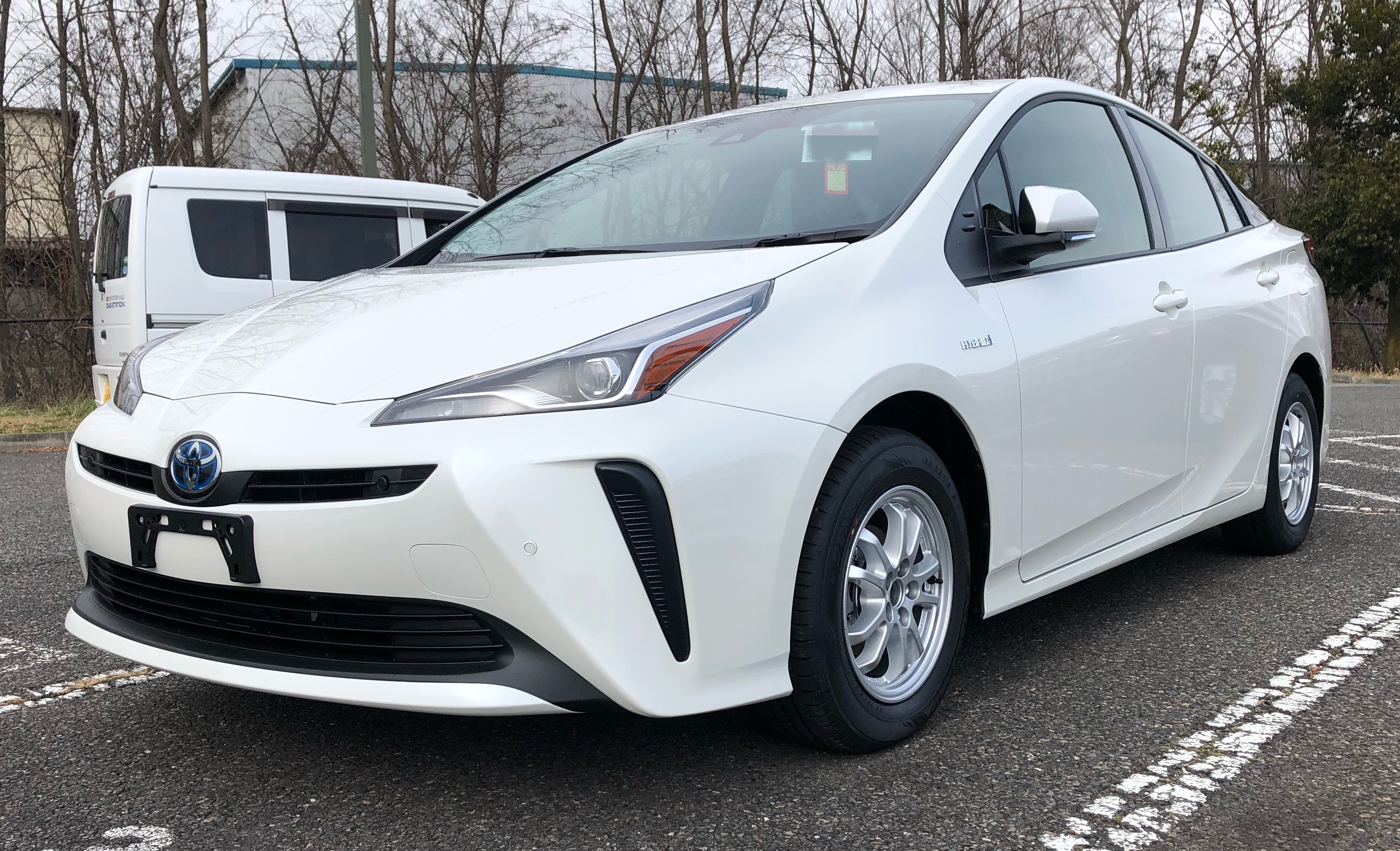
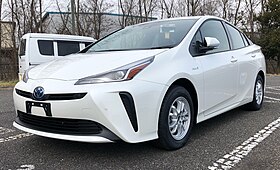
Green vehicles can be powered by alternative fuels and advanced vehicle technologies and include hybrid electric vehicles, plug-in hybrid electric vehicles, battery electric vehicles, compressed-air vehicles, hydrogen and fuel-cell vehicles, neat ethanol vehicles, flexible-fuel vehicles, natural gas vehicles, clean diesel vehicles, and some sources also include vehicles using blends of biodiesel and ethanol fuel or gasohol.[7][8] In November 2016, with an EPA-rated fuel economy of 136 miles per gallon gasoline equivalent (mpg-e) (1.7 L/100 km), the 2017 Hyundai Ioniq Electric became the most efficient EPA-certified vehicle considering all fuels and of all years, surpassing the 2014-2016 model year all-electric BMW i3.[5][9]
Several author also include conventional motor vehicles with high fuel economy, as they consider that increasing fuel economy is the most cost-effective way to improve energy efficiency and reduce carbon emissions in the transport sector in the short run.[1] As part of their contribution to sustainable transport, these vehicles reduce air pollution and greenhouse gas emissions, and contribute to energy independence by reducing oil imports.[2][1]
An environmental analysis extends beyond just the operating efficiency and emissions. A life-cycle assessment involves production and post-use considerations. A cradle-to-cradle design is more important than a focus on a single factor such as energy efficiency.[3][4]
Energy efficiency
- The most significant is by using alternative propulsion:
- An efficient engine that reduces the vehicle's consumption of petroleum (i.e. petroleum electric hybrid vehicle), or that uses renewable energy sources throughout its working life.
- Using biofuels instead of petroleum fuels.
- Proper maintenance of a vehicle such as engine tune-ups, oil changes, and maintaining proper tire pressure can also help.
- Removing unnecessary items from a vehicle reduces weight and improves fuel economy as well.
| Comparison of several types of green car basic characteristics (Values are overall for vehicles in current production and may differ between types) | |||||
|---|---|---|---|---|---|
| Type of vehicle/ powertrain |
Fuel economy (mpg equivalent) |
Range | Production cost for given range |
Reduction in CO2 compared to conventional |
Payback period |
| Conventional ICE | 10–78 | Long (400–600 mi) |
Low | 0% | - |
| Biodiesel | 18–71 | Long (360–540 mi) |
Low | varies depending on biodiesel source[5] | - |
| All-electric | 54–118 | Shorter (73–150 mi) Luxury models Medium (160–300 mi) |
High Very high |
varies depending on energy source |
- |
| Hydrogen fuel cell | 80[6] | Astronomical | |||
| Hybrid electric | 30–60 | 380 mi[7] | Medium | 5 years[8][1] | |
Types
Another option is the use of alternative fuel composition in conventional fossil fuel-based vehicles, making them function partially on renewable energy sources. Other approaches include personal rapid transit, a public transportation concept that offers automated, on-demand, non-stop transportation on a network of specially built guideways.
Electric and fuel cell-powered[edit]
Examples of vehicles with reduced petroleum consumption include electric cars, plug-in hybrids and fuel cell-powered hydrogen cars.Electric cars are typically more efficient than fuel cell-powered vehicles on a Tank-to-wheel basis.[2] They have better fuel economy than conventional internal combustion engine vehicles but are hampered by range or maximum distance attainable before discharging the battery. The electric car batteries are their main cost. They provide a 0%[3] to 99.9% reduction in CO2 emissions compared to an ICE (gasoline, diesel) vehicle, depending on the source of electricity.[4]
Hybrid electric vehicles[edit]
Hybrid cars may be partly fossil fuel (or biofuel) powered and partly electric or hydrogen-powered. Most combine an internal combustion engine with an electric engine, though other variations too exist. The internal combustion engine is often either a gasoline or Diesel engine (in rare cases a Stirling engine may even be used[5]). They are more expensive to purchase but cost redemption is achieved in a period of about 5 years due to better fuel economy.[6][7]Compressed air cars, stirling vehicles, and others[edit]
Compressed air cars, stirling-powered vehicles, Liquid nitrogen vehicles are even less polluting than electrical vehicles, as the vehicle and its components can be made more environmentally friendly.Solar car races are held on a regular basis in order to promote green vehicles and other "green technology". These sleek driver-only vehicles can travel long distances at highway speeds using only the electricity generated instantaneously from the sun.
Improving conventional cars[edit]
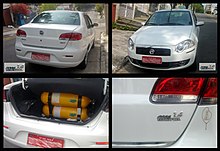
Diesel-powered vehicles can often transition completely to biodiesel, though the fuel is a very strong solvent, which can occasionally damage rubber seals in vehicles built before 1994. More commonly, however, biodiesel causes problems simply because it removes all of the built-up residue in an engine, clogging filters, unless care is taken when switching from dirty fossil-fuel derived diesel to bio-diesel. It is very effective at 'de-coking' the diesel engines combustion chambers and keeping them clean. Biodiesel is the lowest emission fuel available for diesel engines. Diesel engines are the most efficient car internal combustion engines. Biodiesel is the only fuel allowed in some North American national parks because spillages will completely bio-degrade within 21 days. Biodiesel and vegetable oil fuelled, diesel engined vehicles have been declared amongst the greenest in the US Tour de Sol competition.
This presents problems, as biofuels can use food resources in order to provide mechanical energy for vehicles. Many experts point to this as a reason for growing food prices, particularly US Bio-ethanol fuel production which has affected maize prices. In order to have a low environmental impact, biofuels should be made only from waste products, or from new sources like algae.
Electric Motor and Pedal Powered Vehicles[edit]
Multiple companies are offering and developing two, three, and four wheel vehicles combining the characteristics of a bicycle with electric motors. US Federal, State and Local laws do not clearly nor consistently classify[9] these vehicles as bicycles, electric bicycles, motorcycles, electric motorcycles, mopeds, Neighborhood Electric Vehicle, motorised quadricycle or as a car. Some laws have limits on top speeds, power of the motors, range, etc. while others do not.[10][11][12][13]Other[edit]
- Public transportation vehicles are not usually included in the green vehicle category, but Personal rapid transit (PRT) vehicles probably should be. All vehicles that are powered from the track have the advantage of potentially being able to use any source of electric energy, including sustainable ones, rather than requiring liquid fuels. They can also switch regenerative braking energy between vehicles and the electric grid rather than requiring energy storage on the vehicles. Also, they can potentially use the entire track area for solar collectors, not just the vehicle surface. The potential PRT energy efficiency is much higher than that which traditional automobiles can attain.
- Solar vehicles are electric vehicles powered by solar energy obtained from solar panels on the surface (generally, the roof) of the vehicle. Photovoltaic (PV) cells convert the Sun's energy directly into electrical energy. Solar vehicles are not practical day-to-day transportation devices at present, but are primarily demonstration vehicles and engineering exercises, often sponsored by government agencies. However, some cities have begun offering solar-powered buses, including the Tindo in Adelaide, Australia.
- Wind-powered electric vehicles primarily use wind-turbines installed at a strategic point of the vehicle, which are then converted into electric energy which causes the vehicle to propel.
Animal powered vehicles
Human powered vehicles
Benefits of green vehicle use
Environmental[edit]
Vehicle emissions contribute to the increasing concentration of gases linked to climate change.[14] In order of significance, the principal greenhouse gases associated with road transport are carbon dioxide (CO2), methane (CH4) and nitrous oxide (N2O).[15] Road transport is the third largest source of greenhouse gases emitted in the UK, and accounts for over 20% of total emissions,[16] and 33% in the United States.[17] Of the total greenhouse gas emissions from transport, over 85% are due to CO2 emissions from road vehicles. The transport sector is the fastest growing source of greenhouse gases.[18]Health[edit]
Vehicle pollutants have been linked to human ill health including the incidence of respiratory and cardiopulmonary disease and lung cancer. A 1998 report estimated that up to 24,000 people die prematurely each year in the UK as a direct result of air pollution.[19] According to the World Health Organization, up to 13,000 deaths per year among children (aged 0–4 years) across Europe are directly attributable to outdoor pollution. The organization estimates that if pollution levels were returned to within EU limits, more than 5,000 of these lives could be saved each year.Monetary[edit]
Hybrid taxi fleet operators in New York have also reported that reduced fuel consumption saves them thousands of dollars per year.[20]Criticism[edit]
A study by CNW Marketing Research suggested that the extra energy cost of manufacture, shipping, disposal, and the short lives of some of these types of vehicle (particularly gas-electric hybrid vehicles) outweighs any energy savings made by their using less petroleum during their useful lifespan.[21] This type of argument is the long smokestack argument.[22] Critics of the report note that the study prorated all of Toyota's hybrid research-and-development costs across the relatively small number of Priuses on the road, rather than using the incremental cost of building a vehicle; used109,000 miles (175,000 km) for the length of life of a Prius (Toyota offers a 150,000-mile (240,000 km) warranty on the Prius' hybrid components, including the battery), and calculated that a majority of a car's cradle-to-grave energy gets expended during the vehicle's production, not while it is driven.[23] Norwegian Consumer Ombudsman official Bente Øverli stated that "Cars cannot do anything good for the environment except less damage than others." Based on this opinion, Norwegian law severely restricts the use of "greenwashing" to market automobiles, strongly prohibiting advertising a vehicle as being environmentally friendly, with large fines issued to violators.[14][24][25][26]Some studies try to compare environmental impact of electric and petrol vehicles over complete life cycle, including production, operation, and dismantling. [27] [27] [27] [28] In general, results differ vastly dependent on the region considered, due to difference in energy sources to produce electricity that fuels electric vehicles. When considering only CO2 emissions, it is noted that production of electric cars generate about twice as much emissions as that of internal combustion cars.[29] However, emissions of CO2 during operation are much larger (on average) than during production. For electric cars, emissions caused during operation depend on energy sources used to produce electricity and thus vary a lot geographically. Studies suggest that when taking into account both production and operation, electric cars would cause more emissions in economies where production of electricity is not clean, e.g., it is mostly coal based.[30][31]. For this reason, some studies found that driving electric cars is less environmentally damaging in western US states than in eastern ones, where less electricity is produced using cleaner sources. Similarly, in countries like India, Australia or China, where large portion of electricity is produced by using coal, driving electric vehicles would cause larger environmental damage than driving petrol vehicles. When justifying use of electric cars over petrol cars, these kinds of studies do not provide sufficiently clear results. Environmental impact is calculated based on fuel mix used to produce electricity that powers electric cars. However, when a gas vehicle is replaced by an equivalent electric vehicle, additional power must be installed in electrical grid. This additional capacity would normally not be based on the same ratios of energy sources ("clean" versus fossil fuels) than the current capacity. Only when additional electricity production capacity installed to switch from petrol to electric vehicles would predominantly consist of clean sources, switch to electric vehicles could reduce environmental damage. Another common problem in methodology used in comparative studies is that it only focuses on specific kinds of environmental impact. While some studies focus only on emission of gas pollutants over life cycle or only on greenhouse gas emissions such as CO2, comparison should also account for other environmental impacts such as pollutants released otherwise during production and operation or ingredients that can not be effectively recycled.[4] Examples include use of lighter high performing metals, lithium batteries and more rare metals in electric cars, which all have high environmental impact.
A study that also looked at factors other than energy consumption and carbon emissions has suggested that there is no such thing as an environmentally friendly car.[9]
The use of vehicles with increased fuel efficiency is usually considered positive in the short term but criticism of any hydrocarbon-based personal transport remains. The Jevons paradox suggests that energy efficiency programs are often counter-productive, even increasing energy consumption in the long run.[32] Many environmental researchers believe that sustainable transport may require a move away from hydrocarbon fuels and from our present automobile and highway paradigm.[33][34][35]
National and international promotion
European Union[edit]
The European Union is promoting the marketing of greener cars via a combination of binding and non-binding measures.[36] As of April 2010, 15 of the 27 member states of the European Union provide tax incentives for electrically chargeable vehicles and some alternative fuel vehicles, which includes all Western European countries except Italy and Luxembourg, plus the Czech Republic and Romania. The incentives consist of tax reductions and exemptions, as well as of bonus payments for buyers of electric cars, plug-in hybrids, hybrid electric vehicles and natural gas vehicles.[37][38]United States[edit]
The United States Environmental Protection Agency (EPA) is promoting the marketing of greener cars via the SmartWay program. The SmartWay and SmartWay Elite designation mean that a vehicle is a better environmental performer relative to other vehicles. This US EPA designation is arrived at by taking into account a vehicle's Air Pollution Score and Greenhouse Gas Score. Higher Air Pollution Scores indicate vehicles that emit lower amounts of pollutants that cause smog relative to other vehicles. Higher Greenhouse Gas Scores indicate vehicles that emit lower amounts of carbon dioxide and have improved fuel economy relative to other vehicles.To earn the SmartWay designation, a vehicle must earn at least a 6 on the Air Pollution Score and at least a 6 on the Greenhouse Gas Score, but have a combined score of at least 13. SmartWay Elite is given to those vehicles that score 9 or better on both the Greenhouse Gas and Air Pollution Scores.
A Green Vehicle Marketing Alliance, in conjunction with the Oak Ridge National Laboratory (ONRL), periodically meets, and coordinates marketing efforts.[39]
Progressive Insurance Automotive X Prize
The essence of each competition is to design, build and race super-efficient vehicles that will achieve 100 MPGe (2.35 liter/100 kilometer) and can be produced for the mass market.[41] Within the Competition Division, there are two vehicle classes: Mainstream and Alternative. The mainstream class has a prize of $5 million. The alternate class has 2 separate prizes of $2.5 million, one for side-by-side seating and one for tandem seating.[38]
Some of the competitors, such as Aptera and Tesla, are already taking deposits for 'green' vehicles from customers.
Green car rankings
| Selected annual rankings of green cars | |||||
|---|---|---|---|---|---|
| Vehicle | Year model |
Type of vehicle/fuel |
EPA Combined mileage (mpg) |
EPA City mileage (mpg) |
EPA Highway mileage (mpg) |
| Most efficient EPA-certified vehicles based on combined MPG rating[42][13][43][44] | |||||
| Hyundai Ioniq Electric— All years, all fuels | 2017 | Electric car | 136 mpg-e | 150 mpg-e | 122 mpg-e |
| BMW i3— All years, all fuels | 2014/16 | Electric car | 124 mpg-e | 137 mpg-e | 111 mpg-e |
| BMW i3 REx — Current year, gasoline fuel | 2014/16 | Plug-in hybrid | 88 mpg-e | 97 mpg-e | 79 mpg-e |
| Toyota Prius Eco — All years, gasoline fuel | 2016 | Hybrid electric | 56 | 58 | 53 |
| Green Car Journal — Green Car of the Year | |||||
| Chevrolet Bolt EV — 2017 Award[45] | 2017 | Electric car | 119 mpg-e | 128 mpg-e | 110 mpg-e |
| Chevrolet Volt (second generation) — 2016 Award[46][47] | 2016 | Plug-in hybrid | Gas equivalent All-electric mode |
Gasoline only mode |
All-electric range |
| 106 mpg-e | 42 mpg | 53 mi | |||
| BMW i3 — 2015 Award[47] | 2014 | Electric car | 124 mpg-e | 137 mpg-e | 111 mpg-e |
| Honda Accord ninth generation line-up — 2014 Award[48] |
2014 | Gasoline hybrid and plug-in variants |
mim 29 mpg, hybrid 47 mpg, plug-in 115 mpg-e[49] | ||
| Ford Fusion 2nd gen line-up — 2013 Award[50] | 2013 | Gasoline, EcoBoost, hybrid and plug-in variants |
mim 34 mpg, hybrid 47 mpg, plug-in 100 mpg-e | ||
| Honda Civic GX — 2012 Award[51] | 2012 | Natural gas | 28 | 24 | 36 |
| Chevrolet Volt — 2011 Award[52][53][52] | 2011 | Plug-in hybrid | Gas equivalent All-electric mode |
Gasoline only mode |
All-electric range |
| 93 mpg-e | 37 mpg | 35 mi | |||
| Green Car Journal — Green Car Vision Award | |||||
| Ford C-Max Energi — 2012 Award[54] | 2013 | Plug-in hybrid | Gas equivalent All-electric mode |
Gasoline only mode |
All-electric range |
| Ford Focus Electric — 2011 Award[55] | 2012 | Electric car | Gasoline equivalent fuel economy |
All-electric range | |
| 100 mi | |||||
| Nissan Leaf — 2010 Award[13][56] | 2011 | Electric car | Gasoline equivalent fuel economy |
All-electric range | |
| 99 mpg-e | 73 mi | ||||
| Chevrolet Volt — 2009 Award[57][58][58] | 2011 | Plug-in hybrid | Gas equivalent All-electric mode |
Gasoline only mode |
All-electric range |
| 93 mpg-e | 37 mpg | 35 mi | |||
| World Car of the Year — World Green Car | |||||
| Toyota Mirai — 2016 Award[59] | 2016 | Hydrogen fuel cell | 66 mpg-e | 66 mpg-e | 66 mpg-e |
| BMW i8 — 2015 Award[60][61] | 2015 | Plug-in hybrid | Gas equivalent All-electric mode |
Gasoline only mode |
All-electric range |
| 76 mpg-e | 28 mpg | 15 mi | |||
| BMW i3 — 2014 Award[62] | 2014 | Electric car | Gasoline equivalent fuel economy |
All-electric range | |
| 124 mpg-e | 81 mi | ||||
| Tesla Model S — 2013 Award[63] | 2013 | Electric car (60/85 kWh battery) |
Gasoline equivalent fuel economy |
All-electric range | |
| 95/89 mpg-e | 208/265 mi | ||||
| Mercedes-Benz S 250 CDI BlueEFFICIENCY — 2012 Award[64] |
2012 | Clean diesel | 5.7 l/100 km (50 mpg‑imp; 41 mpg‑US) | ||
| Chevrolet Volt — 2011 Award[65] | 2011 | Plug-in hybrid | Gas equivalent All-electric mode |
Gasoline only mode |
All-electric range |
| 93 mpg-e | 37 mpg | 35 mi | |||
| Volkswagen BlueMotion — 2010 Award[64] (Golf, Passat, Polo) |
2010 | Clean diesel | n.a. | n.a. | n.a. |
| Honda FCX Clarity — 2009 Award[65] (miles per kilogram of hydrogen) |
2009 | Hydrogen fuel cell | 59 mpg-e | 58 mpg-e | 60 mpg-e |
| Consumer Reports Top Picks: Green Car Category | |||||
| Tesla Model S — Best overall model 2014[64] | 2014 | Electric car (60/85 kWh battery) |
Gasoline equivalent fuel economy |
All-electric range | |
| 95/89 mpg-e | 208/265 mi | ||||
| Toyota Prius — Best green car 2014[66] | 2014 | Hybrid electric | 50 | 51 | 48 |
| Toyota Prius — Best green car 2013[67] | 2013 | Hybrid electric | 50 | 51 | 48 |
| Toyota Prius — Best green car 2012[68] | 2012 | Hybrid electric | 50 | 51 | 48 |
| Toyota Prius — Best green car 2011[65] | 2011 | Hybrid electric | 50 | 51 | 48 |
| Toyota Prius — Best green car 2010[65] | 2010 | Hybrid electric | 50 | 51 | 48 |
| Toyota Prius — Best green car 2009[69] | 2009 | Hybrid electric | 46 | 48 | 45 |
| Consumer Reports American Top Picks: Green Car Category | |||||
| Ford Fusion Hybrid — Top Pick 2011[66] | 2011 | Hybrid electric | 39 | 41 | 36 |
| Ford Fusion Hybrid — Top Pick 2010[69] | 2010 | Hybrid electric | 39 | 41 | 36 |
| Ford Escape Hybrid — Top Pick 2009[66] | 2009 | Hybrid electric | 32 | 34 | 31 |
| What Car? Green Awards | |||||
| BMW 320d Efficient Dynamics — Overall Winner 2012[69] | 2012 | Clean diesel | UK combined 56 mpg‑imp (5.0 L/100 km; 47 mpg‑US)[66] | ||
| Vauxhall Ampera — Overall Winner 2011[70] | 2012 | Plug-in hybrid | EC combined 235.4 mpg‑imp (1.200 L/100 km; 196.0 mpg‑US)[67] | ||
| Toyota Auris Hybrid — Overall Winner 2010[63] | 2010 | Hybrid electric | UK combined 74 mpg‑imp (3.8 L/100 km; 62 mpg‑US)[71] | ||
| Volvo S40 1.6D DRIVe S — Overall Winner 2009[63] | 2009 | Clean diesel | UK combined 60 mpg‑imp (4.7 L/100 km; 50 mpg‑US)[63] | ||
| Ford Focus 1.6 TDCi Style — Overall Winner 2008[63] | 2008 | Clean diesel | UK combined 52 mpg‑imp (5.4 L/100 km; 43 mpg‑US)[65] | ||
| Mother Earth News Best Green Cars | |||||
| Best Green Cars of 2011[66] | |||||
| Chevrolet Volt | 2011 | Plug-in hybrid | Gas equivalent All-electric mode |
Gasoline only mode |
All-electric range |
| 93 mpg-e | 37 mpg | 35 mi | |||
| Nissan Leaf | 2011 | Electric car | Gasoline equivalent fuel economy |
All-electric range | |
| 99 mpg-e | 73 mi | ||||
| Toyota Prius | 2011 | Hybrid electric | 50 | 51 | 48 |
| Ford Fiesta | 2011 | Gasoline | 33 | 29 | 38 |
| Honda CR-Z CVT | 2011 | Hybrid electric | 37 | 35 | 39 |
| VW Jetta TDI | 2011 | Clean diesel | 34 | 30 | 42 |
| Best Green Cars of 2010[71] | |||||
| Ford Fusion Hybrid | 2010 | Hybrid electric | 39 | 41 | 36 |
| Honda Civic Hybrid | 2010 | Hybrid electric | 42 | 40 | 45 |
| Honda Insight | 2010 | Hybrid electric | 41 | 40 | 43 |
| Toyota Prius | 2010 | Hybrid electric | 50 | 51 | 48 |
| VW Golf TDI | 2010 | Clean diesel | 34 | 30 | 42 |
| VW Jetta TDI | 2010 | Clean diesel | 41 | 40 | 43 |
| American Council for an Energy-Efficient Economy Greenest Vehicles of the Year | |||||
| Greenest Vehicles of 2012 (Top 5)[66] | |||||
| Mitsubishi i-MiEV | 2012 | Electric car | 112 mpg-e | 3.8 mile/Kwh | 2.9 mile/Kwh |
| Honda Civic GX | 2012 | Natural gas | - | 27mpg-e | 38 mpg-e |
| Nissan Leaf | 2012 | Electric car | 99 mpg-e | 3.1 mile/Kwh | 2.7 mile/Kwh |
| Toyota Prius | 2012 | Hybrid electric | 50 | 51 | 48 |
| Honda Insight | 2012 | Hybrid electric | 42 | 41 | 44 |
| Greenest Vehicles of 2011 (Top 5)[71][64] | |||||
| Honda Civic GX | 2011 | Natural gas | 28 | 24 | 36 |
| Nissan Leaf | 2011 | Electric car | 99 mpg-e | 3.15 mile/Kwh | 2.72 mile/Kwh |
| Smart fortwo (Cabriolet/Coupe) | 2011 | Gasoline | 36 | 33 | 41 |
| Toyota Prius | 2011 | Hybrid electric | 50 | 51 | 48 |
| Honda Civic Hybrid | 2011 | Hybrid electric | 41 | 40 | 43 |
| Greenest Vehicles of 2010 (Top 5)[71] | |||||
| Honda Civic GX | 2010 | Natural gas | 28 | 24 | 36 |
| Toyota Prius | 2010 | Hybrid electric | 50 | 51 | 48 |
| Honda Civic Hybrid | 2010 | Hybrid electric | 42 | 40 | 45 |
| Smart fortwo (Convertible/coupe) | 2010 | Gasoline | 36 | 33 | 41 |
| Honda Insight | 2010 | Hybrid electric | 41 | 40 | 43 |
| Kelley Blue Book Top 10 Green Cars | |||||
| Top 10 Green Cars of 2014 (Top 5)[72] | |||||
| BMW i3 | 2014 | Electric car | Gasoline equivalent fuel economy |
All-electric range | |
| 124 mpg-e | 81 mi | ||||
| Nissan Leaf | 2014 | Electric car | Gasoline equivalent fuel economy |
All-electric range | |
| 99 mpg-e | 73 mi | ||||
| Toyota Prius | 2014 | Hybrid electric | 50 | 51 | 48 |
| Tesla Model S | 2014 | Electric car (60/85 kWh battery) |
Gasoline equivalent fuel economy |
All-electric range | |
| 95/89 mpg-e | 208/265 mi | ||||
| Honda Accord Hybrid | 2014 | Hybrid electric | 47 | 50 | 45 |
| Top 10 Green Cars of 2011 (Top 3)[72][71] | |||||
| Nissan Leaf | 2011 | Electric car | Gasoline equivalent fuel economy |
All-electric range | |
| 99 mpg-e | 73 mi | ||||
| Chevrolet Volt | 2011 | Plug-in hybrid | Gasoline equivalent fuel economy |
All-electric range | |
| 93 mpg-e | 35 mi | ||||
| Toyota Prius | 2011 | Hybrid electric | 50 | 51 | 48 |
| Top 10 Green Cars of 2010 (Top 3)[71][71] | |||||
| Toyota Prius | 2010 | Hybrid electric | 50 | 51 | 48 |
| Honda Insight | 2010 | Hybrid electric | 41 | 40 | 43 |
| Ford Fusion Hybrid | 2010 | Hybrid electric | 39 | 41 | 36 |
Electric vehicle motor shows
- Alternative Vehicle and Fuel Show (AVFS), Fair of Valladolid, Spain, in November.[73]
- Green Fleet Expo, Royal Botanical Gardens (Ontario), in May.[65]
- Green-Car-Guide Live!, Arena and Convention Centre in Liverpool, in June[63]
- Electric & Hybrid Vehicle Technology Expo, (Sindelfingen, Germany, April / Novi, Detroit, Michigan, September). [1]
- European Electric Motor Show, Helsinki Exhibition & Convention Centre, in November[67][66][74]
See also
- Alternative fuel vehicle
- Alternatives to the automobile
- Better Place
- Emerging technologies - e.g. new green vehicle methods
- Green tuning
- Green Challenge
- Government incentives for plug-in electric vehicles
- Hybrid taxis
- Union of Concerned Scientists' Hybrid Scorecard
- Low-carbon emissions
- Low-carbon fuel standard
- Miles per gallon gasoline equivalent
- Motorised quadricycle
- Plug-in electric vehicles
- Progressive Insurance Automotive X Prize
- Zero-emissions vehicle
Notes and references
Further reading
- Leitman, Seth; Brant, Bob (October 2008). Build Your Own Electric Vehicle, 2nd Edition. McGraw-Hill, Inc. ISBN 978-0-07-154373-6.
- Tobin Smith; Jim Woods; Liz Claman (2008). "Waving the Green Flag, Clean Transportation". Billion Dollar Green. John Wiley and Sons. pp. 35–46. ISBN 978-0-470-34377-7.
- DFE2008 Automobile Engines, Wikiversity
External links
- 2013 VehicleTechnologies Market Report, Oak Ridge National Laboratory
- Alternative Fuels and Advanced Vehicle Data Center
- AU Green Vehicle Guide
- Clean Car Calculator (Institute for Energy Efficiency)
- Clean Cities - 2014 Vehicle Buyer's Guide, National Renewable Energy Laboratory (NREL), U.S. Department of Energy, Clean Cities program. December 2013.
- Cradle-to-Grave Lifecycle Analysis of U.S. Light-Duty Vehicle-Fuel Pathways: A Greenhouse Gas Emissions and Economic Assessment of Current (2015) and Future (2025-2030) Technologies (includes estimated cost of avoided GHG emissions from different AFV technologies), Argonne National Laboratory, June 2016.
- Earth cars
- EPA Green Vehicle Guide
- Green Cars (Autocar)
- Green Car Center (Yahoo)
- Green Car Guide.
- Infographic: Green Cars 101 (2011)
- Green cars and eco driving
- Green Progress
- Model Year 2014 Fuel Economy Guide , U.S. Environmental Protection Agency and U.S. Department of Energy, April 2014.
- Progressive Insurance Automotive X PRIZE homepage
- Small Efficient Vehicles Wiki: People's Car Project
- State of Charge: Electric Vehicles’ Global Warming Emissions and Fuel-Cost Savings across the United States (UCS)
- Top Ten EPA-Rated Fuel Sippers (2016) - including BEVs and PHEVs
- UCS Hybrid Scorecard (Union of Concerned Scientists)
Green vehicle
Content
- 1 Energy efficiency
- 2 Types
- 3 Animal powered vehicles
- 4 Human powered vehicles
- 5 Benefits of green vehicle use
- 6 National and international promotion
- 7 Progressive Insurance Automotive X Prize
- 8 Green car rankings
- 9 Electric vehicle motor shows
- 10 See also
- 11 Notes and references
- 12 Further reading
- 13 External links
Green vehicle
External Media

- CC BY-SA 4.0
- File: File:2019 Toyota Prius (ZVW50R) 1.8 Hybrid liftback (2018-12-19) 01.jpg
- Created: 19 Dec 2018

- CC BY-SA 3.0
- File: File:Chevrolet Volt WAS 2011 837.JPG
- Created: 28 Jan 2011
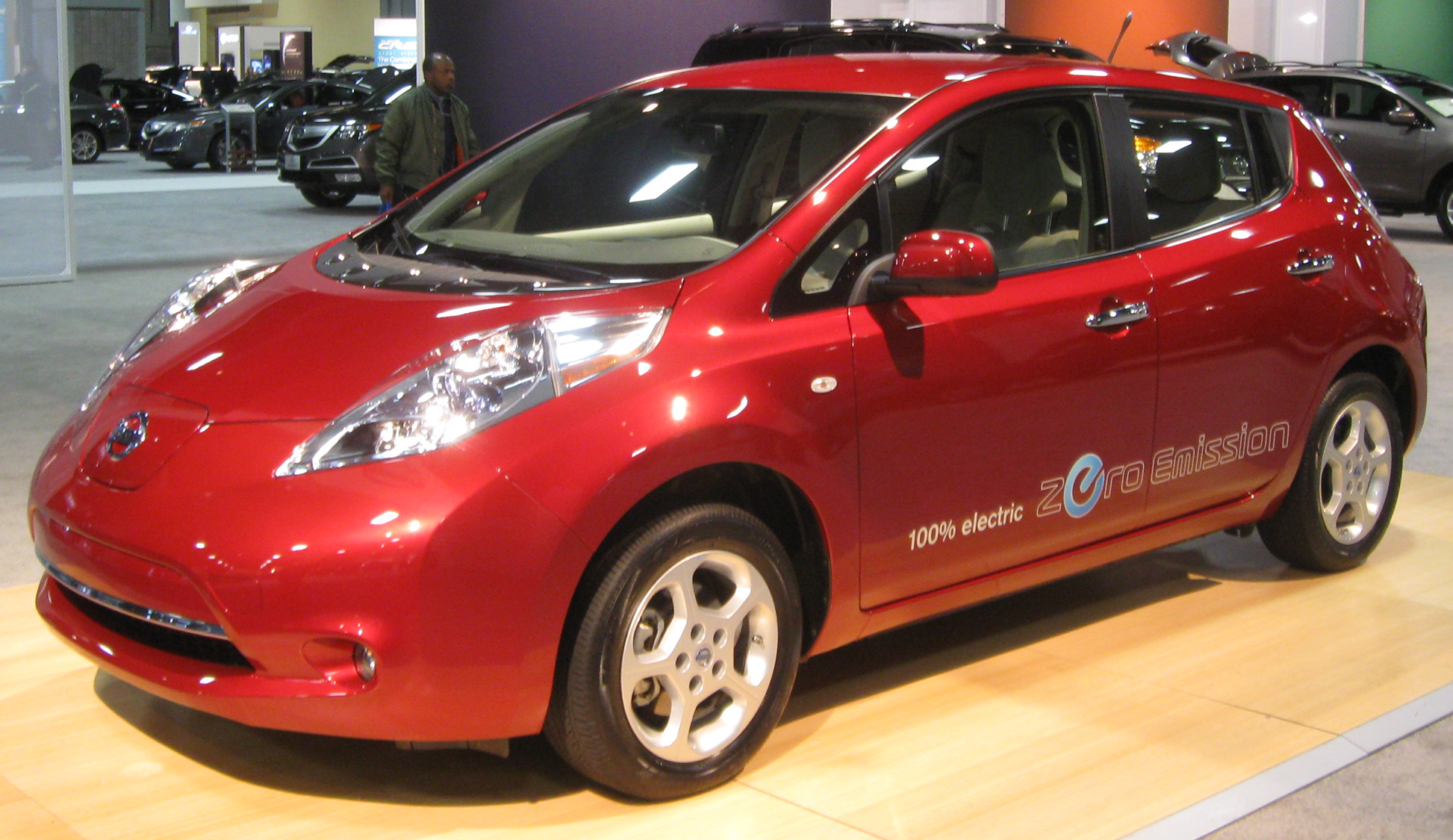
- Public domain
- File: File:2011 Nissan Leaf -- 2011 DC.jpg
- Created: 29 Jan 2011
- CC BY 3.0
- File: File:2013-03-05 Geneva Motor Show 8120.JPG
- Created: 5 Mar 2013
- Location: 46°14'1",6°7'11
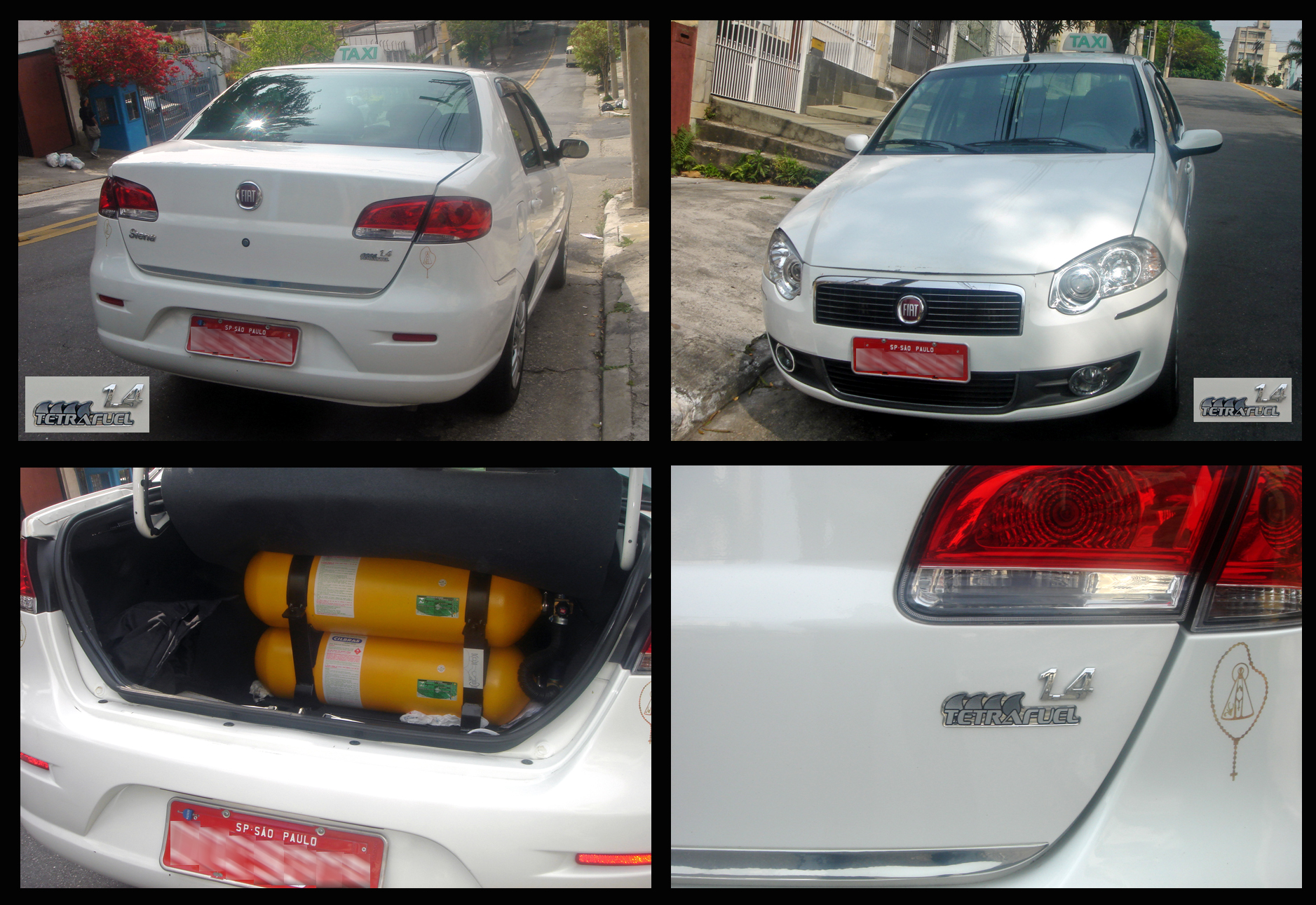
- CC BY 3.0
- File: File:Brazilian Fiat Siena TetraFuel four views.jpg
- Created: 20 Oct 2008

- CC-BY-SA-3.0
- File: File:Vélo'v station 5002 - Place des Compagnons de la chanson.jpg
- Location: 45°45'23",4°47'47
- CC BY-SA 4.0
- File: File:Toyota Prius (11).JPG
- Created: 19 Sep 2015
- Location: 50°6'46",8°38'26

- CC BY 2.5
- File: File:2016 Chevrolet Volt NAIAS 2015 trimmed.jpg
- Created: 17 Jan 2015
- CC BY-SA 3.0
- File: File:DCA 06 2012 Chevy Volt 4035.JPG
- Created: 9 June 2012

- CC BY-SA 4.0
- File: File:2018 Nissan Leaf Tekna Front.jpg
- Created: 4 Feb 2018
- CC BY-SA 4.0
- File: File:Toyota Mirai in Warsaw, Poland Nov 2015 IMG 0130.JPG
- Created: 22 Nov 2015
- Location: 52°14'31",21°0'53

- CC BY-SA 3.0
- File: File:I MiEV EDTA DC 04 2011 1782.jpg
- Created: 19 Apr 2011

- CC BY-SA 3.0
- File: File:Ford Focus Electric with badging WAS 2011 924.jpg
- Created: 29 Jan 2011

- CC BY-SA 3.0
- File: File:Ford C Max Energi PHEV with badging WAS 2011 897.jpg
- Created: 28 Jan 2011

- CC BY-SA 2.0
- File: File:2014 Tesla Model S in Germany.jpg
- Created: 19 Apr 2014

- CC BY-SA 3.0
- File: File:Ford Fusion Energi SEL with badge WAS 2012 0583.jpg
- Created: 27 Jan 2012

- CC BY 2.0
- File: File:2014 Honda Accord Plug-In Hybrid Sedan trimmed.jpg
- Created: 12 Dec 2012

- CC BY 3.0
- File: File:Honda Civic Hybrid with logo DC 5020 03 2009.jpg
- Created: 17 Mar 2009
- CC BY-SA 3.0
- File: File:2010 Ford Fusion Hybrid WAS 2010 8830.JPG
- Created: 27 Jan 2010






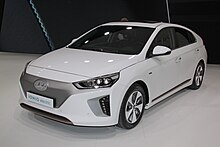


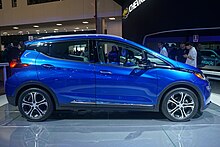
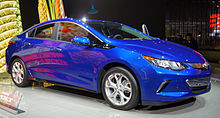

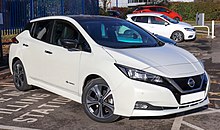






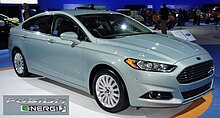









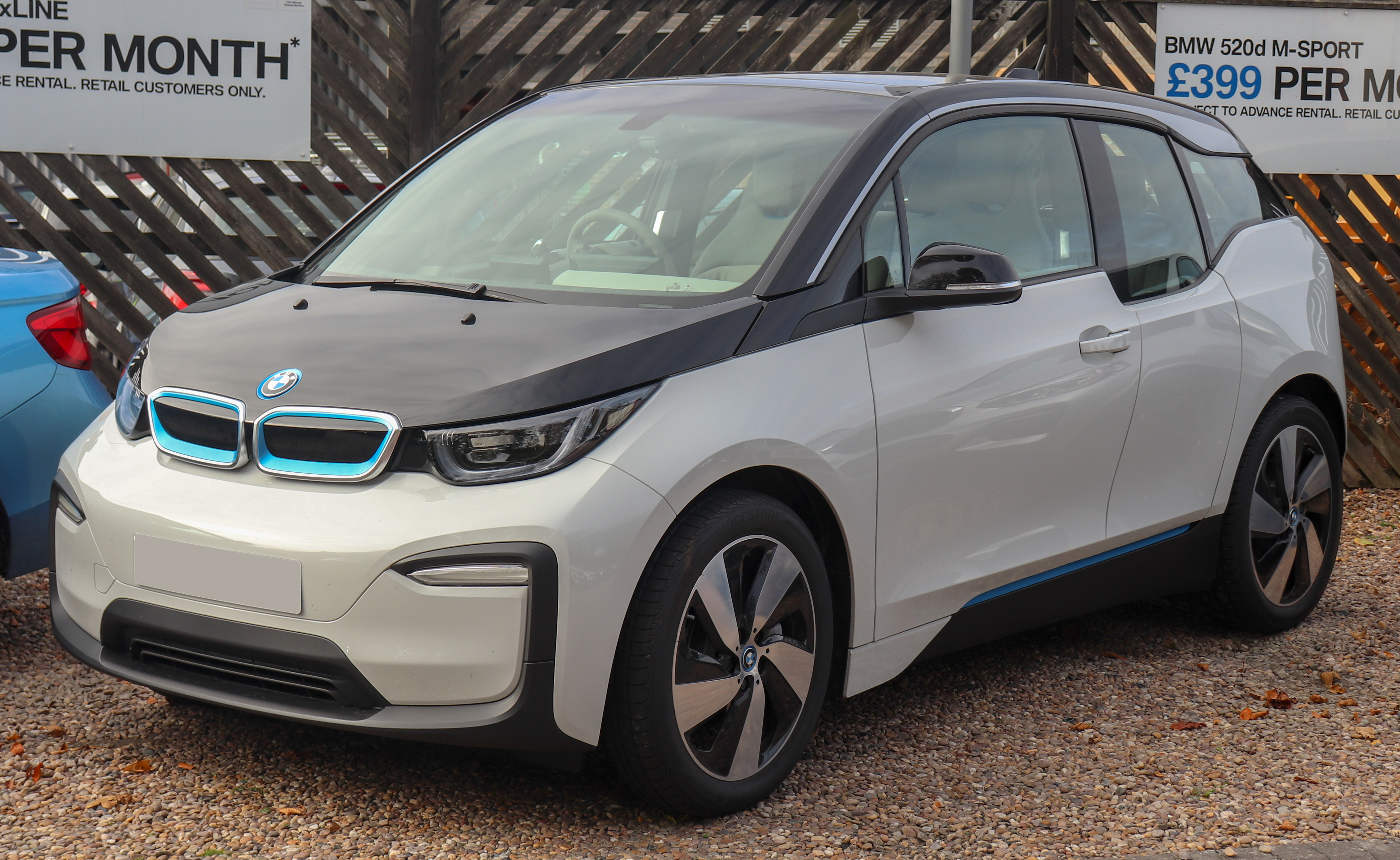












No comments
Post a Comment